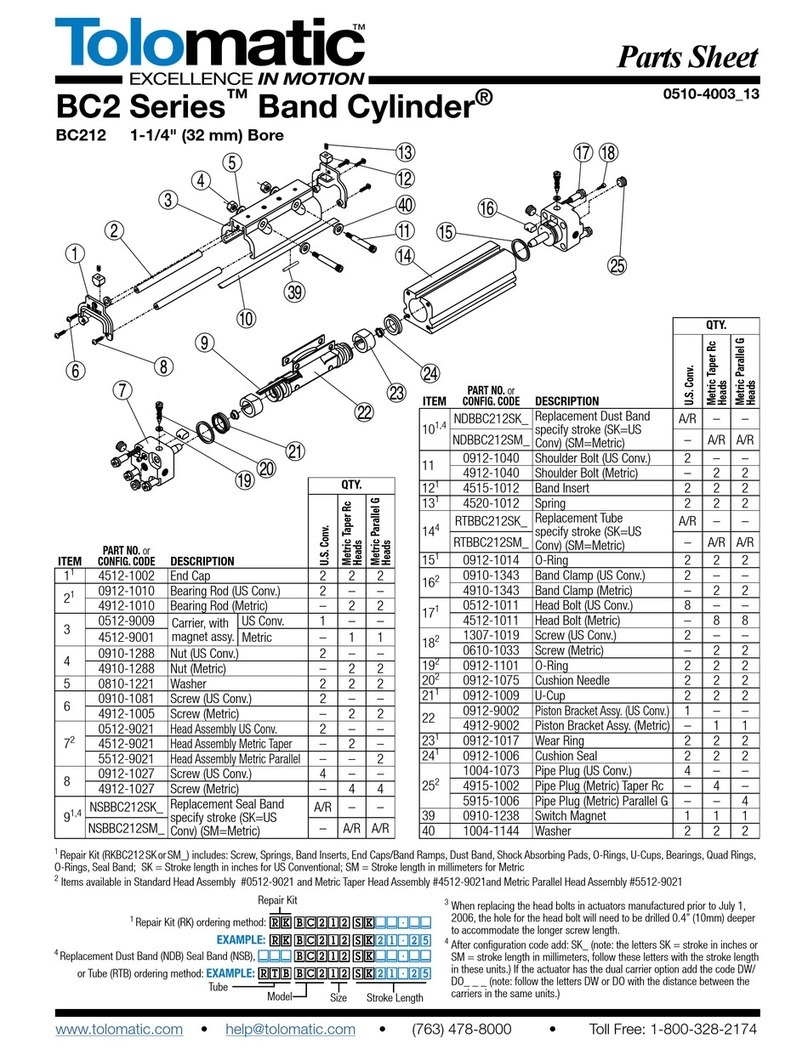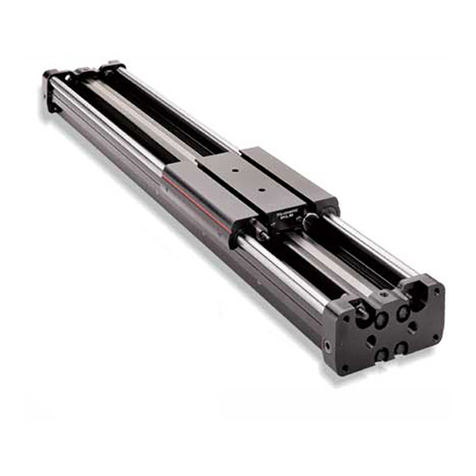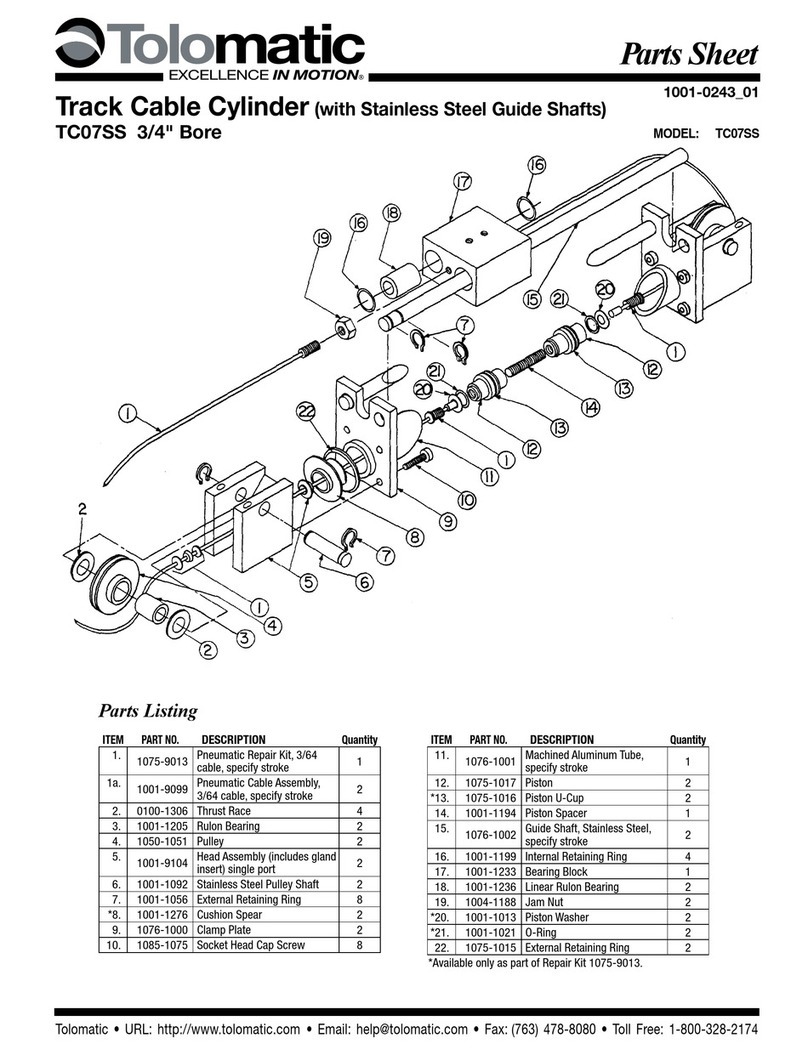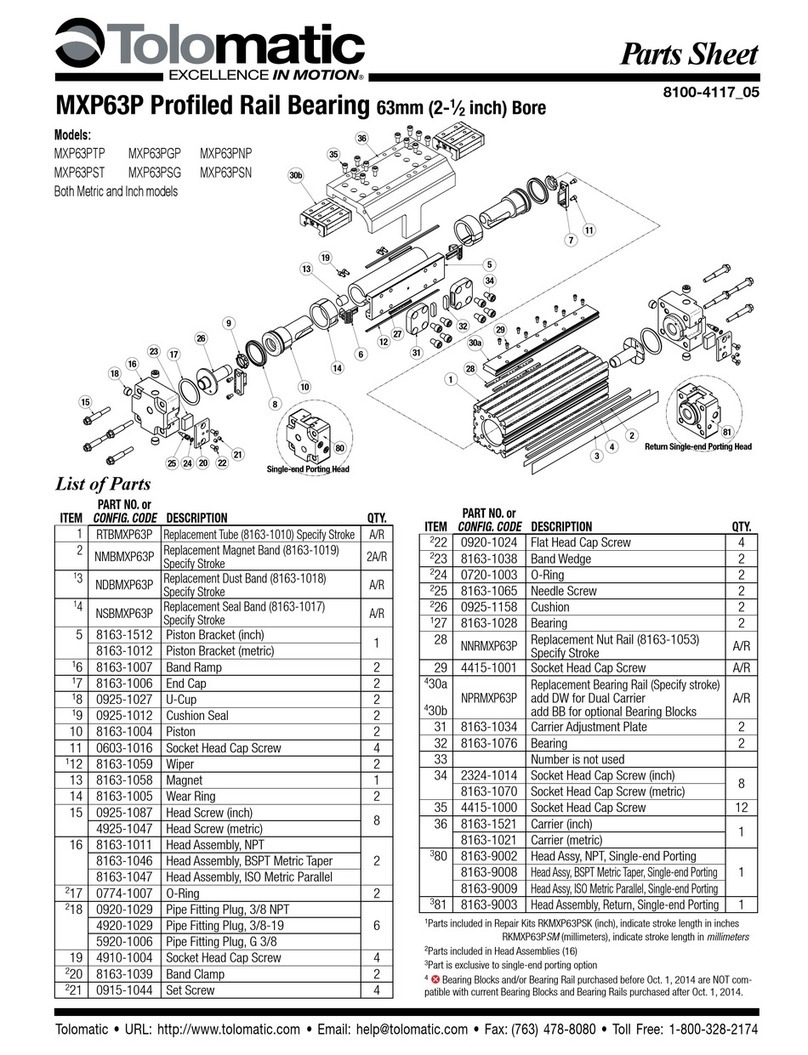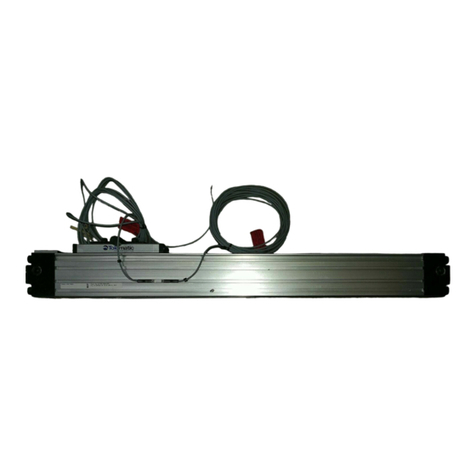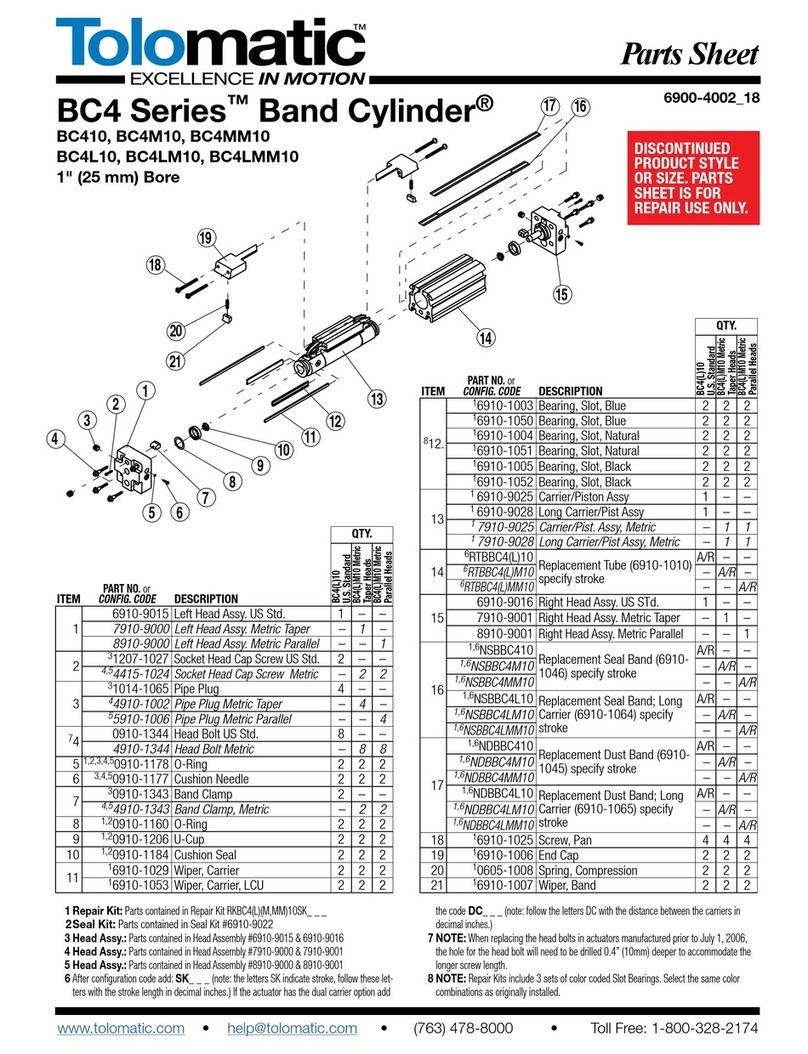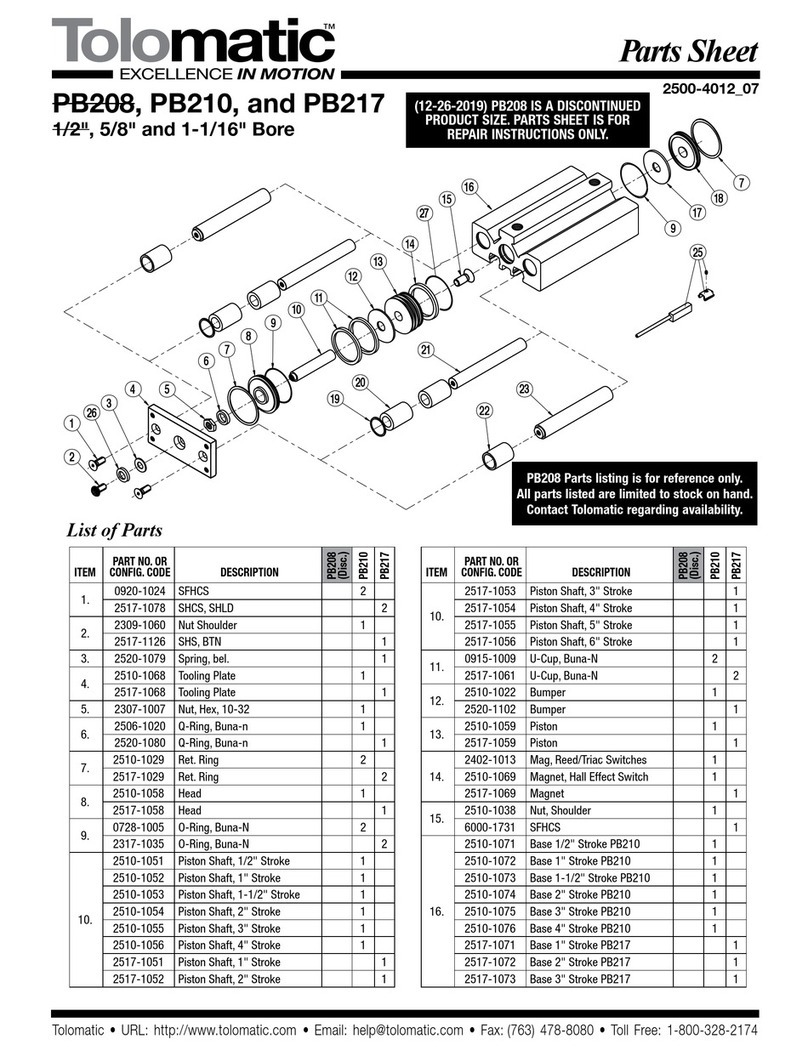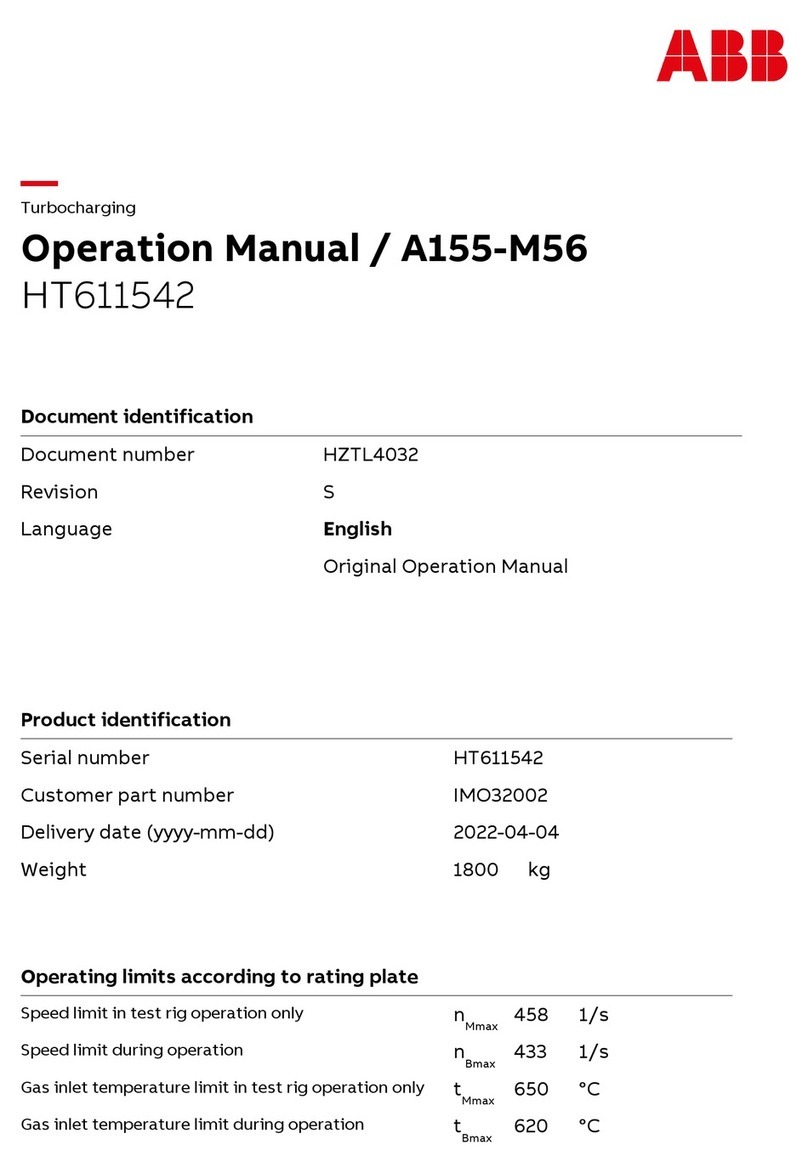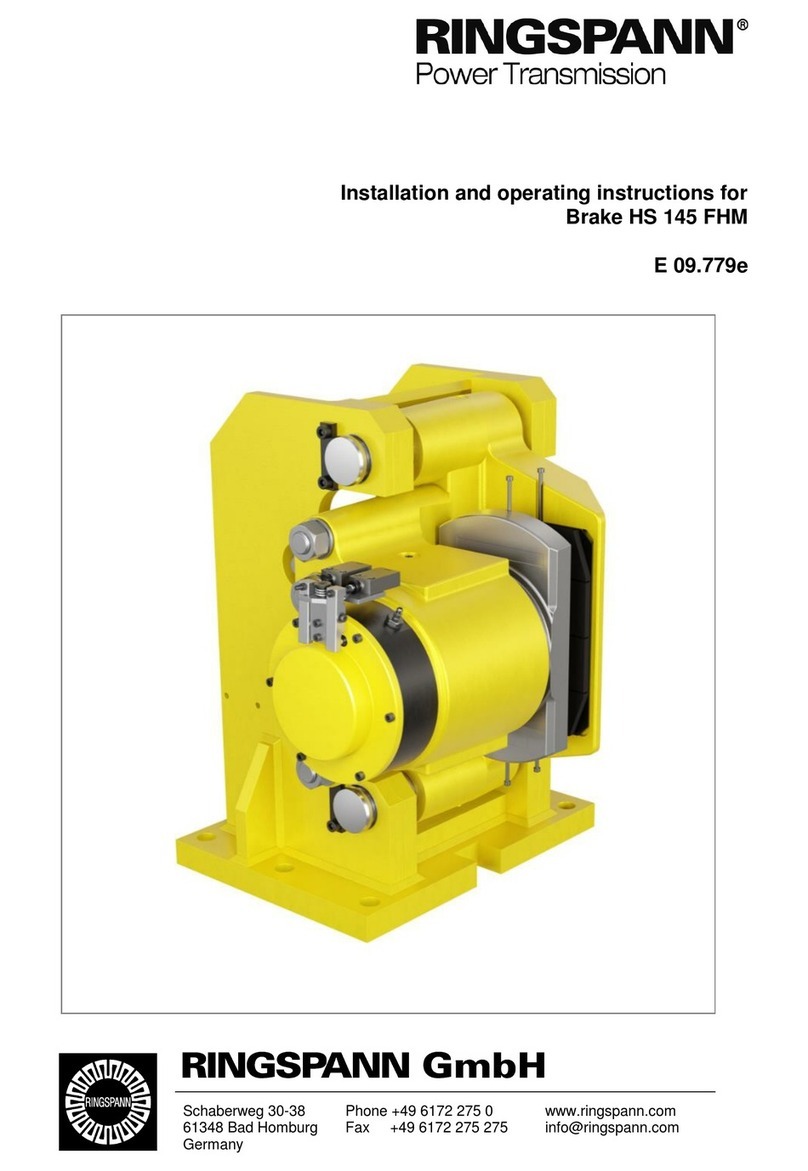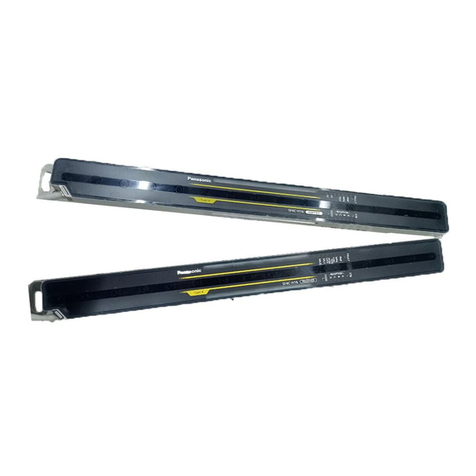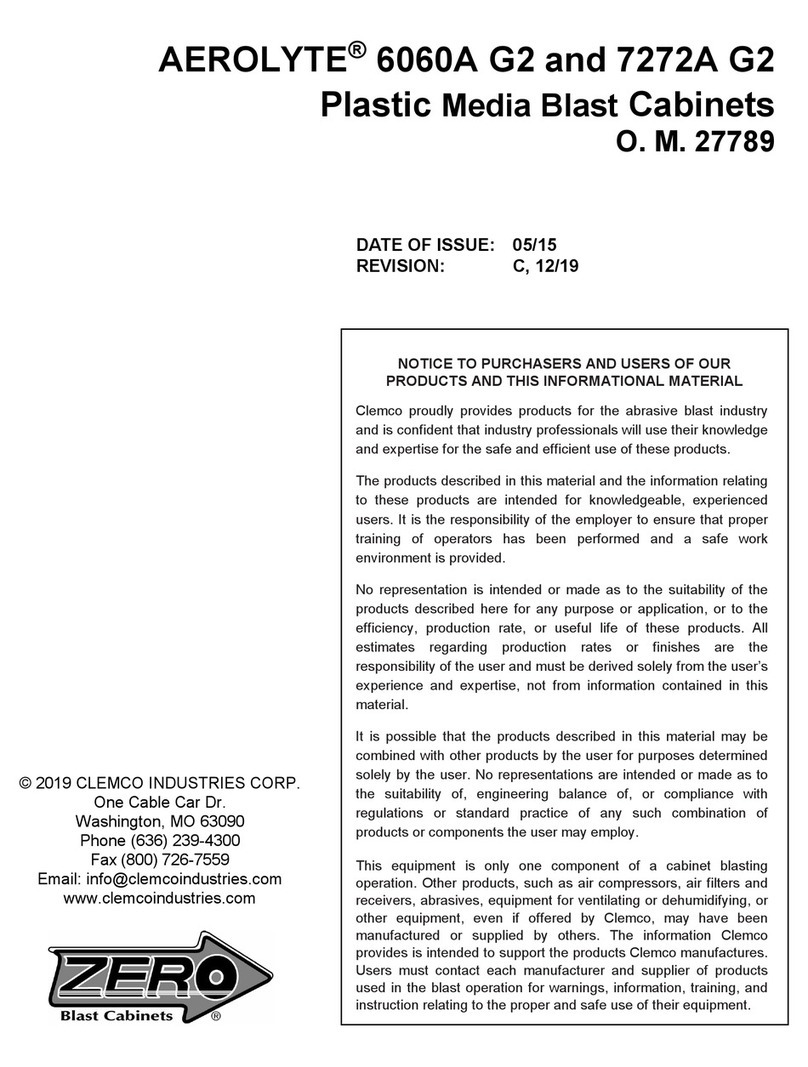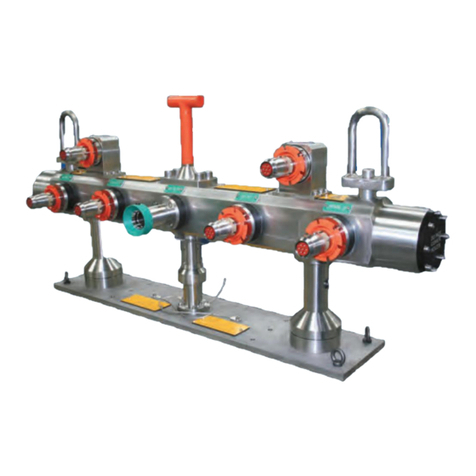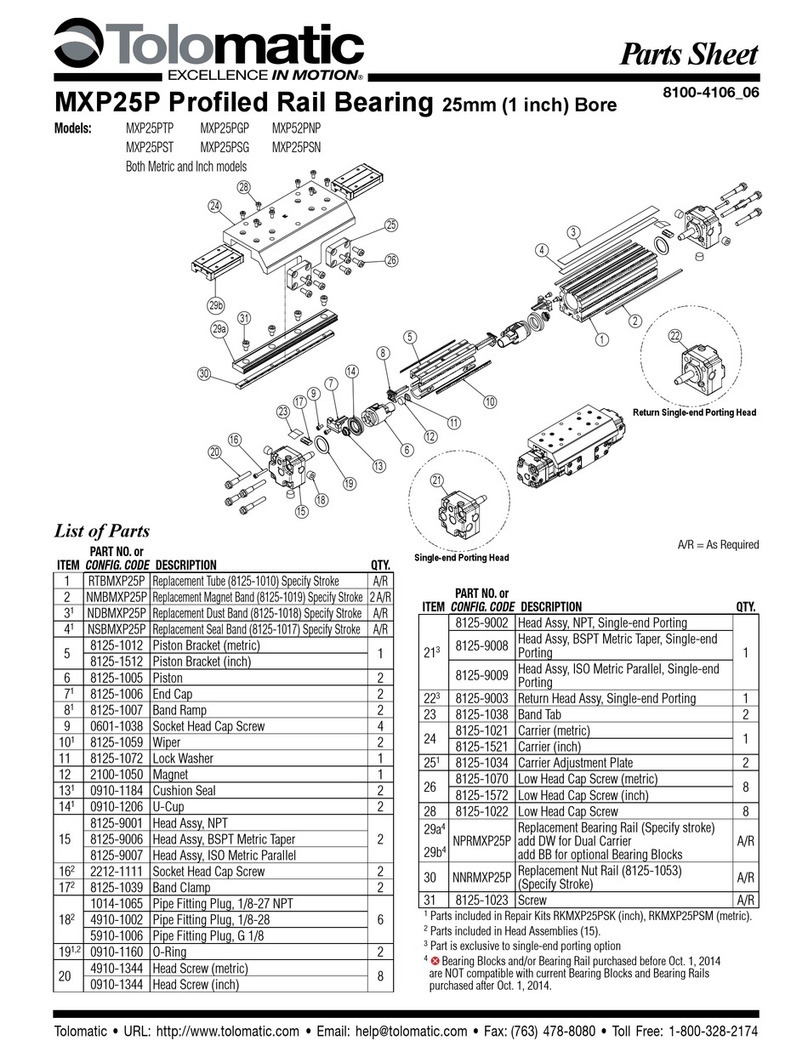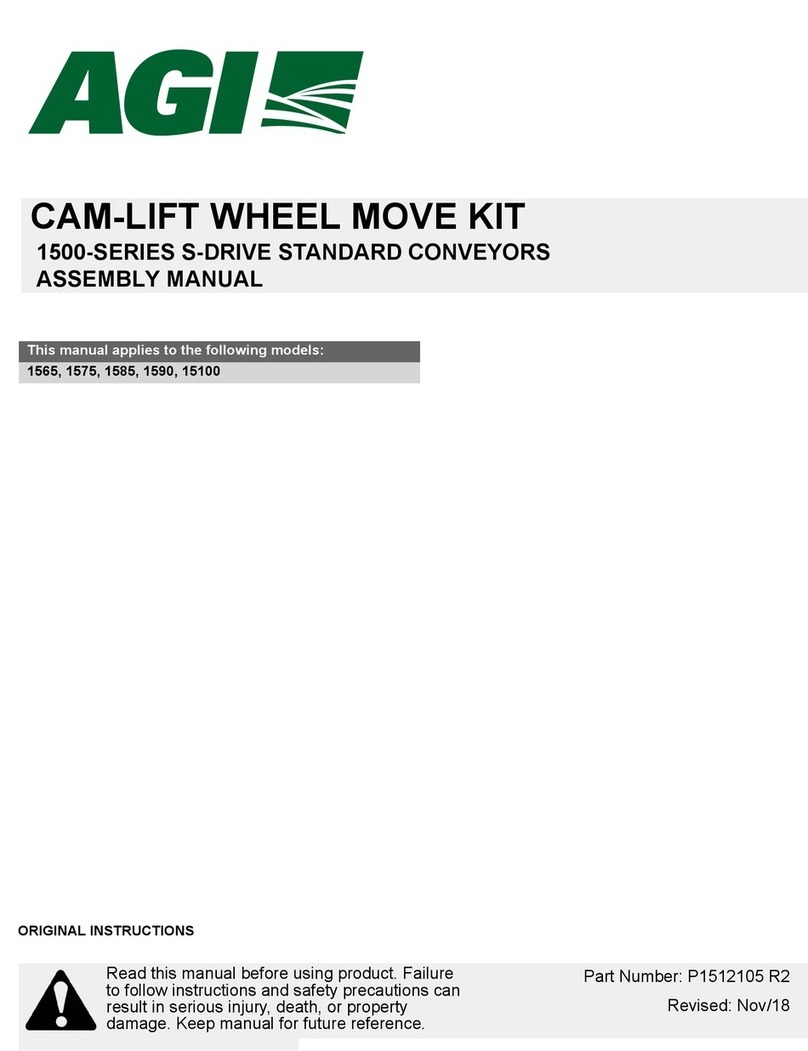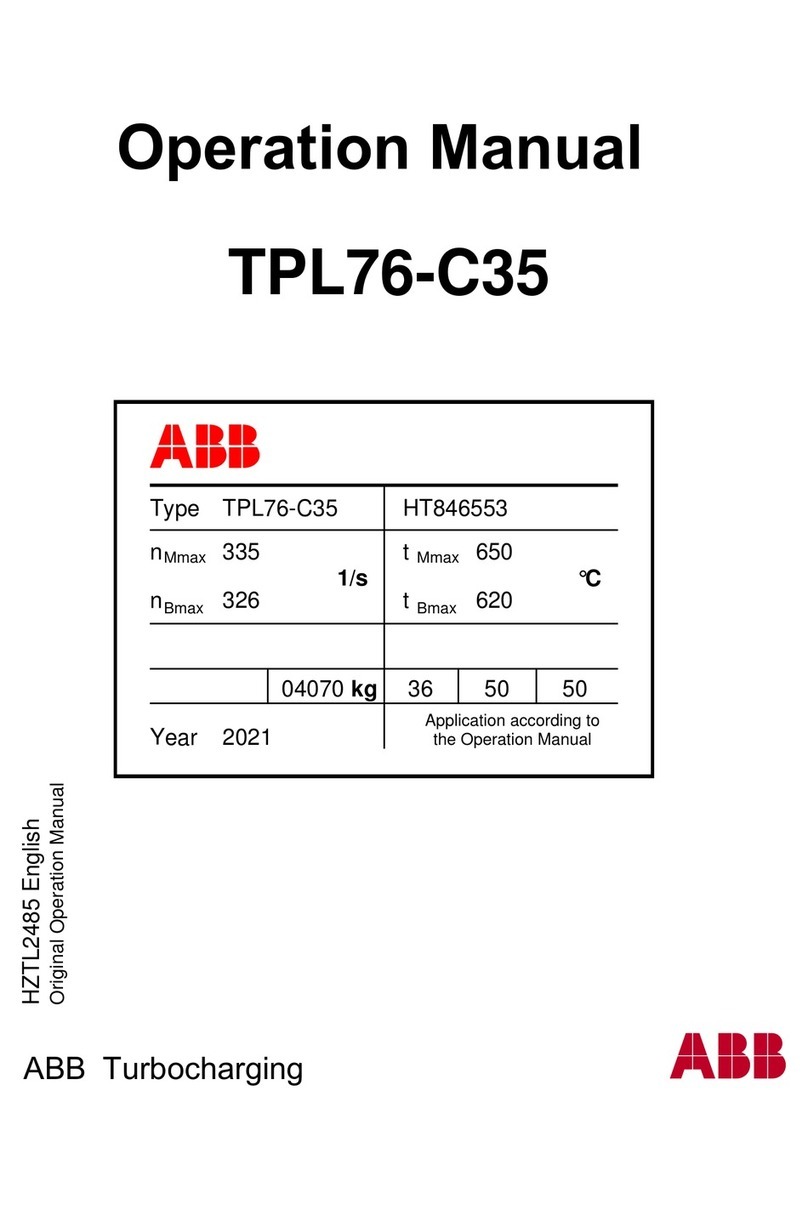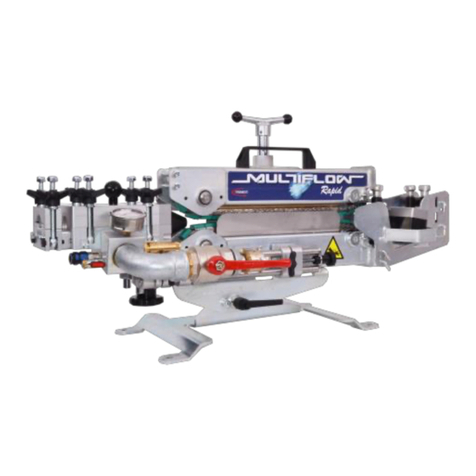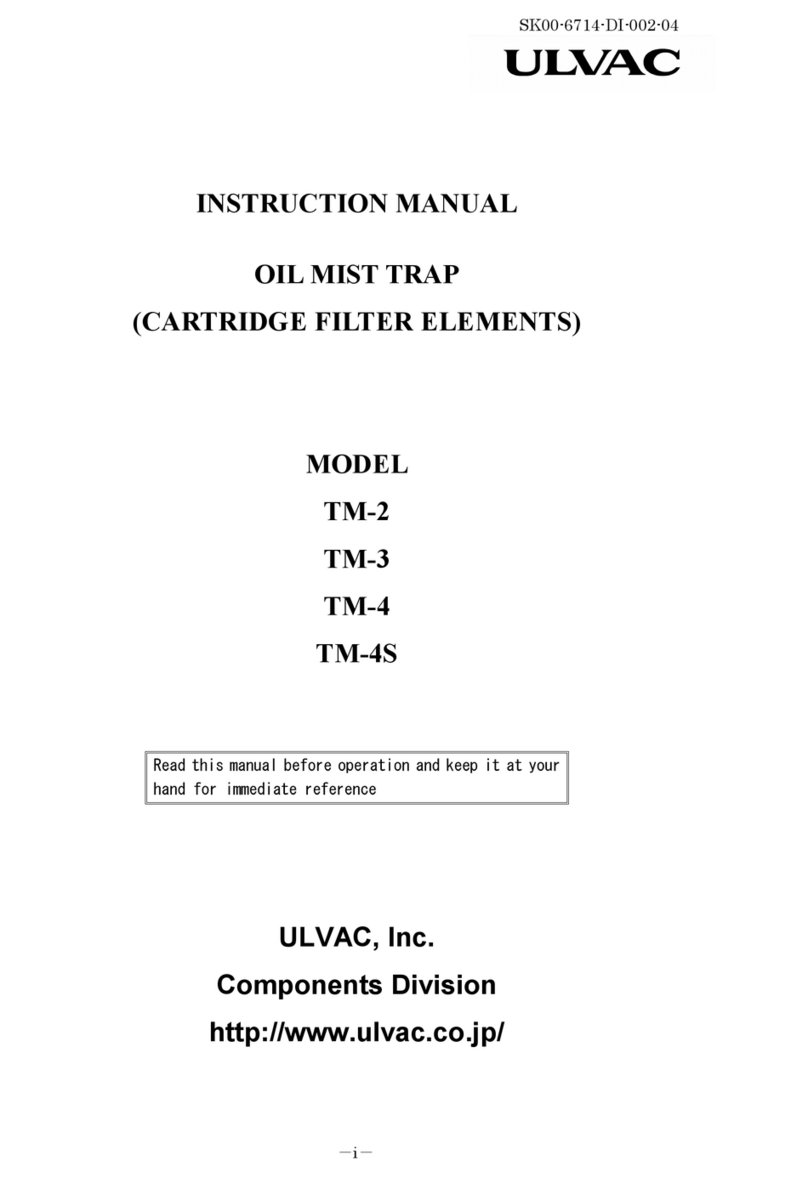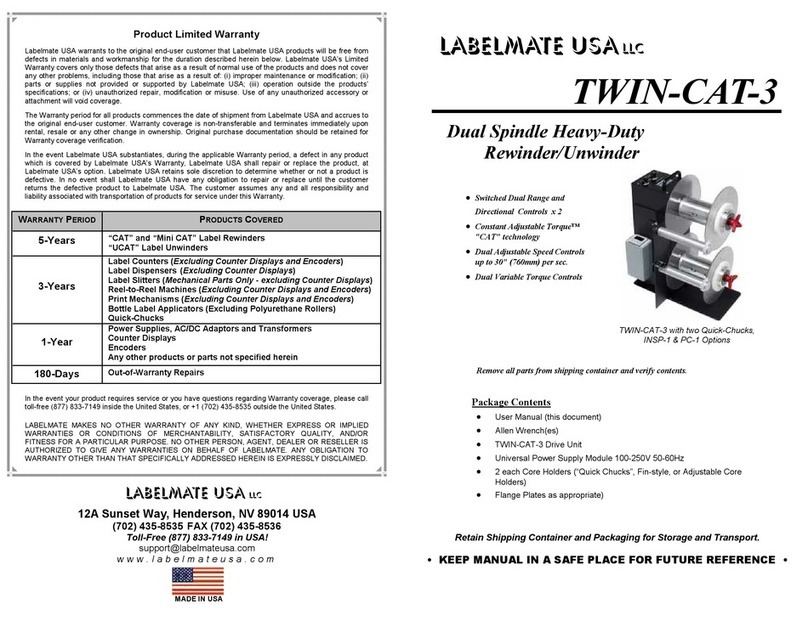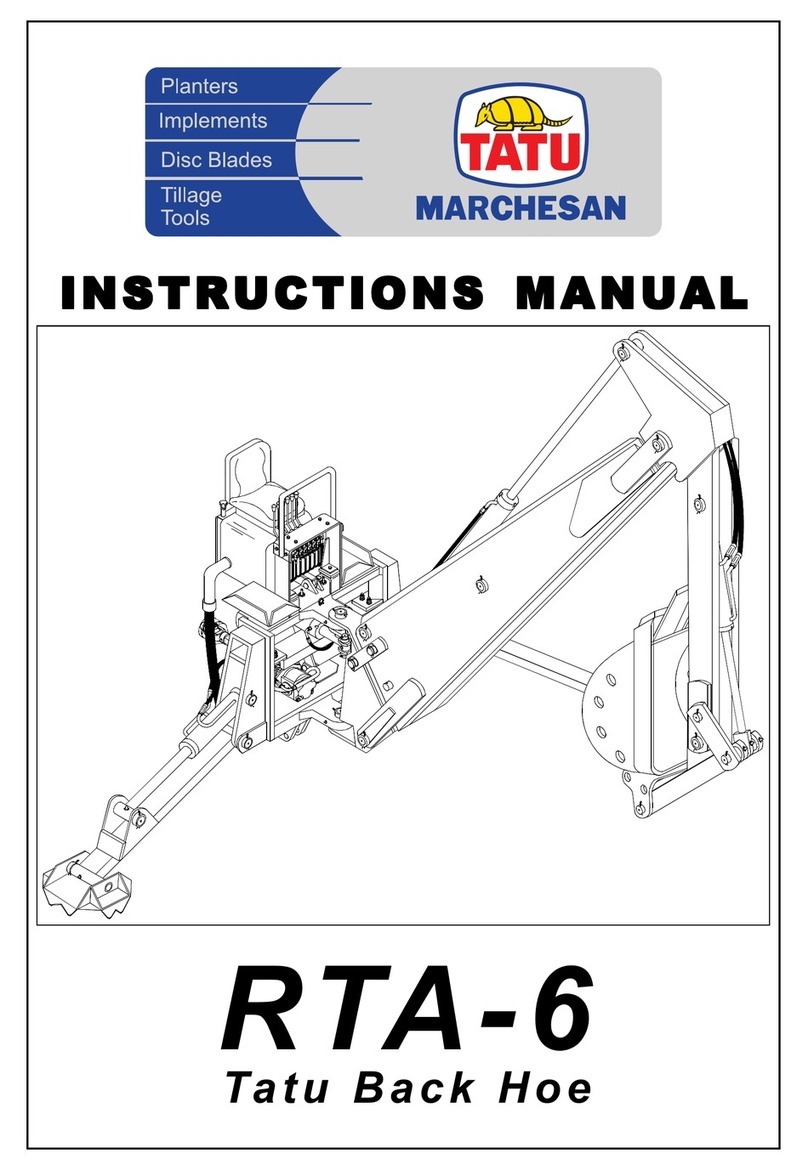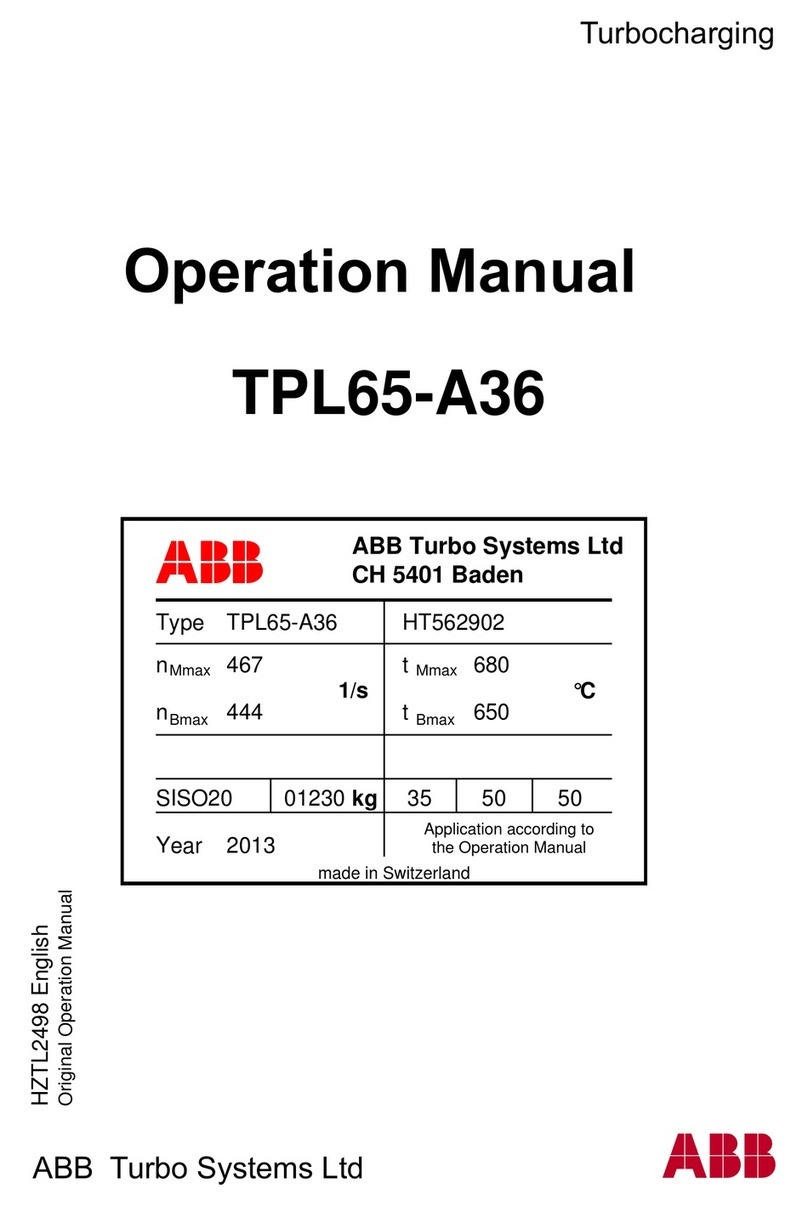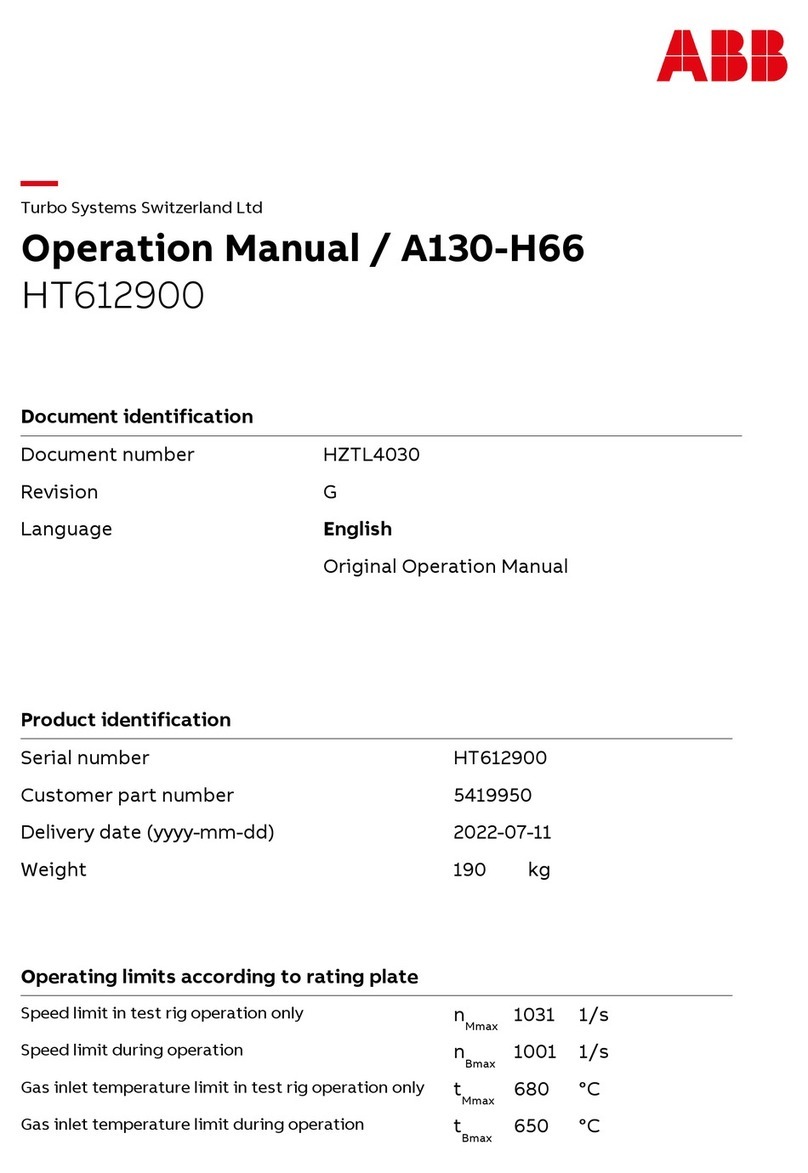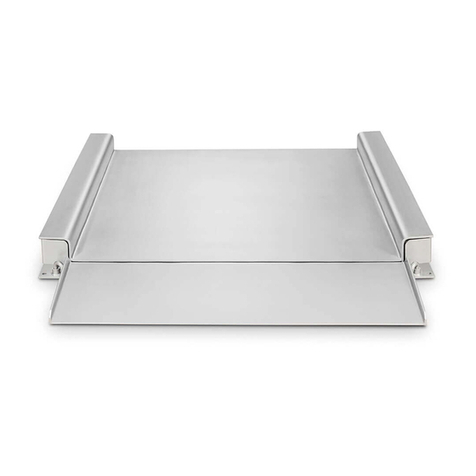
TOLOMA
TIC
•
URL:
http://www
.tolomatic.com
•
Email:
[email protected] •
Fax:
(763)
478-8080
•
T
oll
Free:
1-800-328-2174
Parts Sheet #3420-4005_11_BC320ps
4 – Instructions BC320, BC3M20
CYLINDER DISASSEMBLY INSTRUCTIONS FOR INSTALLATION OF
REPAIR KITS ONLY
1. Remove Band Cylinder from machinery.
2.
Remove any foot mounting hardware external shock absorbers or
switches if present. Remove the four Head Screws(13) and the two
Set Screws(6) from each cylinder Head(8). Remove the Upper Clamp
Pad(4), Upper Clamp(5) and Lower Clamp(3). Remove Heads.
3. Remove Screws(42) from End Caps(26) and slide End Caps off
Carrier(33). Slide off Carrier Cover(27). Remove top Dust Band(2).
Remove Screws(29) to release Piston Blocks(38). Slide Carrier(33)
slightly either direction to remove Piston Blocks(38) and release
Piston Bracket Assembly(18). Slide Piston Bracket Assembly out
end of tube.
CAUTION: DO NOT remove the Carrier or the rails. Ball Bearings
will fall out as a result.
4. Dislodge the inner Sealing Band(1) from its groove by gently press-
ing down on the band with an O-ring Pick or similar tool.(When
doing so, take care that NO SCRATCHES are made in the tube
bore slot.) Remove Sealing Band.
CYLINDER ASSEMBLY INSTRUCTIONS
1. CLEAN AND LUBRICATE
Thoroughly clean all components, particularly the tube bore slot and
bands. Thoroughly lubricate the tube with Magnalube®-G grease.
2. READY INNER SEALING BAND
Lubricate rubber strip on both sides of new Sealing Band(1) with
Magnalube®-G grease. Slide Sealing Band(1) into cylinder
Tube(22) with rubber portion facing up. Center band in Tube so
equal lengths of Band extend out both ends.
CAUTION: Metal edges of Sealing Band are sharp. Exercise caution
to avoid injury to yourself of the Band and Tube when inserting.
3. INSTALL PISTON ASSEMBLY
Lubricate and install new U-Cups(12)(lip seals facing out) onto
Piston ends(18). Lubricate and install new Cushion
Seals(20)(small end facing out) into Piston ends and rotate to seat
them in their grooves.
NOTE: If the cylinder will be used with optional shock absorber
packages, do not install the Cushion Seals. Doing so will adversely
affect shock performance.
Lubricate and install new Wear Rings(17) onto the piston with the
thinner edge and widest part of the flat inward, lining up the wider
flat portion with the band ramp and the narrower flat portion with
the flat on the Piston. Place a small amount of grease into the
Cushion Seals on each end of the Piston. Fill indentations on both
sides of the Piston Bracket Assembly(18) completely with grease
and install into the cylinder Tube(22) feeding the Sealing Band(1)
between the Piston and Bracket. If the cylinder is equipped for
switches, it is important to note which side of the Piston Bracket
Assembly(18) contains the Magnet, as switches must be attached
to that side of the Tube. Slide the Piston Bracket Assembly(18) to
the Carrier(33), slide the Carrier back over the Piston and continue
to move the Piston Bracket Assembly the length of the tube to seat
the sealing band in its groove. Wipe away excess grease.
NOTE: If Tube and Piston were greased properly, excess grease
should be present as Piston exits end of tube.
4. TRIM SEALING BAND
With a razor blade, remove rubber from extended band until flush
with the end of tube. With tin snips, trim band to length indicated.
Cylinder Size Trim Length From Tube
2"(50 mm) 1.200" (30.48 mm)(Tolerance of +/- .032")
CAUTION: Bands inaccurately cut too long may cause serious
injury to your hand when pressing the head onto the tube.
5. INSTALL HEADS
Lubricate and install new O-Rings(11) onto Head snouts. Lubricate
and install new O-rings(16) into cross ports on Heads(8). Remove
Cushion Needle Valve(10) and lubricate and install new O-Rings(9)
onto Cushion Needle Valves. Insert Cushion Needle Valves(10)
back into Heads(8). Insert heads into tube using a slight rocking
motion. DO NOT TWIST. Twisting the head during installation may
cut the O-ring resulting in excessive leakage during operation.
NOTE: When inserting heads, make sure band does not get
pushed backwards into tube. Rubber on band must remain flush to
the tube after head installation.
Install Head Bolts(13) into heads(8). Torque Head Bolts(13) to
180-195 in.-lbs(20.34-22.03 Nm).
6. LUBRICATE BALLWAYS
Before installing the top Dust Band(2) lubricate the ballways with
Mobil HP grease.
7. INSTALL CARRIER STOPS
Place a Piston Stop(38) on either side of the Piston Bracket
Assembly(18), notch on Stop to face bracket. Slide the Carrier(33)
over the Piston Bracket and Carrier Stops(38) until holes in the
Carrier line up with holes in Piston Stops. Apply Loctite #242 on the
Screws(29) and secure stops to the carrier. There should be no
slack between stops and bracket.
8. INSTALL DUST BAND
Install the top Dust Band(2) over the Carrier(33) centering it along
the length of the cylinder. Slide Carrier Cover(27) into slots on top
of Carrier. Apply Loctite #242 to Screws(42) and secure End
Caps(26) to ends of Carrier(33). With tin snips, cut ends of top
band 1/16" in from outside edge of Head(8). Place a Lower
Clamp(3) between the Sealing Band(1) and Dust Band(2). Place
Upper Clamp Pad(4) and Upper Clamp(5) in each Head(8). Apply
Loctite #242 to Set Screws(6) and insert in Upper Clamp(5).
Torque set screws to 20-30 in.-lbs. to secure bands.
9. CHECK ASSEMBLY
Run the Carrier(33) back and forth along the full stroke to make
certain the cylinder is properly assembled before applying air.
Before mounting cylinder back in application, check the cylinder’s
internal cushions.(If optional shock absorber kits are being used,
this step can be eliminated as Cushion Seals(20) were not
installed.) Push the Carrier(33) to one end. You should feel the
Cushion decelerate the Carrier before the Cushion bottoms out. If
the Carrier slams into the end of the cylinder, either the Cushion
Seals have not been properly installed or the Cushion Needle
Valve(10) is adjusted too far out.
10. REMOUNT
Before installing back in application, check your air lines to be sure
they are in good condition and free of leaks. Remount and apply air.
If external shock absorbers are not being used, readjustment of the
Cushions may be necessary. Start by screwing the Cushion Needle
Valve(10) all the way in but do not tighten, then back it out slightly.
Cycle the cylinder and back the Cushion Needle Valve out as nec-
essary to reduce the amount of cushion. This will prevent the load
from slamming into an under adjusted cushion and prevent band
damage caused from pressure spikes as a result of over tightening
the Cushion Needle Valve.








